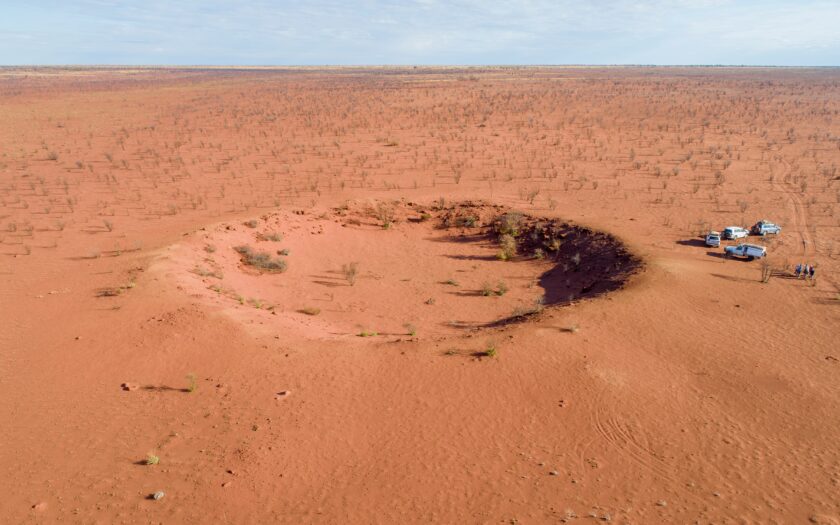Deep within the remote Gibson Desert in Australia lies the enigmatic Veevers Crater, a captivating geological formation that has fascinated scientists and adventurers alike. This natural wonder offers a window into Earth’s ancient history and the powerful forces that have shaped our planet.
Table of Contents
Formation and Discovery of Veevers Crater
Located in the vast expanse of the Desert, is an impact structure formed by a meteorite strike millions of years ago. Geologist Dr. John Veevers identified and studied this extraordinary site, recognizing its unique features and geological significance. The crater’s distinct formations continue to intrigue researchers, providing valuable insights into Earth’s geological processes.
Geological Features
Spanning several kilometres in diameter, the Crater boasts a central uplift surrounded by a circular rim. The meteorite impact resulted in complex geological formations, including uplifted rock layers and shattered rocks. These features bear witness to the tremendous energy released during the impact event, showcasing the Earth’s dynamic nature.
Scientific Significance
Veevers Crater holds immense scientific value, enabling researchers to study the effects of meteorite impacts on Earth’s geological evolution. The rocks and minerals within the crater provide valuable clues about crater formation, shock metamorphism, and subsequent geological transformations. Scientists continue to unlock the secrets hidden within Crater, expanding our understanding of our planet’s history.
Biodiversity and Conservation
Nestled within the Gibson Desert, Veevers Crater is not only geologically intriguing but also home to a diverse range of flora and fauna. The unique combination of geological features and the desert’s challenging environment support various plant and animal species. Conservation efforts aim to protect this delicate ecosystem, preserving its biodiversity for future generations.
Visitor Experience
Exploring it in the Gibson Desert is a journey into the heart of geological wonders. Visitors can immerse themselves in the rugged landscape, hike along the crater rim, and witness the mesmerizing vistas. Guided tours and educational programs offer insights into the crater’s formation, its geological significance, and the fascinating natural history of the Gibson Desert.
Unlocking Earth’s Secrets
Veevers Crater in the Gibson Desert stands as a testament to Earth’s geological wonders and the powerful forces that have shaped our planet. By studying this ancient impact structure, scientists gain valuable insights into the dynamic nature of Earth’s geology. The ongoing exploration and research at the Crater contribute to our broader understanding of the universe and our place within it.
Gibson Desert in Australia
The Gibson Desert, spanning over 156,000 square kilometres in the heart of Australia, is a captivating landscape of untamed beauty and ancient cultural significance. This vast and arid desert, characterized by its sweeping sand dunes, rugged terrain, and sparse vegetation, is home to a rich biodiversity of plant and animal species uniquely adapted to its harsh conditions. With its remote and untouched wilderness, it offers intrepid adventurers an opportunity to immerse themselves in the raw, captivating beauty of one of Australia’s most remarkable natural landscapes.
The nearest town to the Desert is Warburton, which is located to the south of the desert. The nearest major city is Alice Springs, which is located to the east of the Desert in the Northern Territory of Australia.
Conclusion
Veevers Crater, situated in the remote Gibson Desert, unveils the mysteries of Earth’s geological history. This enigmatic impact structure provides a glimpse into the powerful forces that have shaped our planet. It offers scientific insights, supports biodiversity, and invites visitors to explore the awe-inspiring landscapes of the Desert. It stands as a testament to Earth’s geological wonders, reminding us of the intricate processes that have shaped our world.
To know more about different places around the world do check out Travel category.

